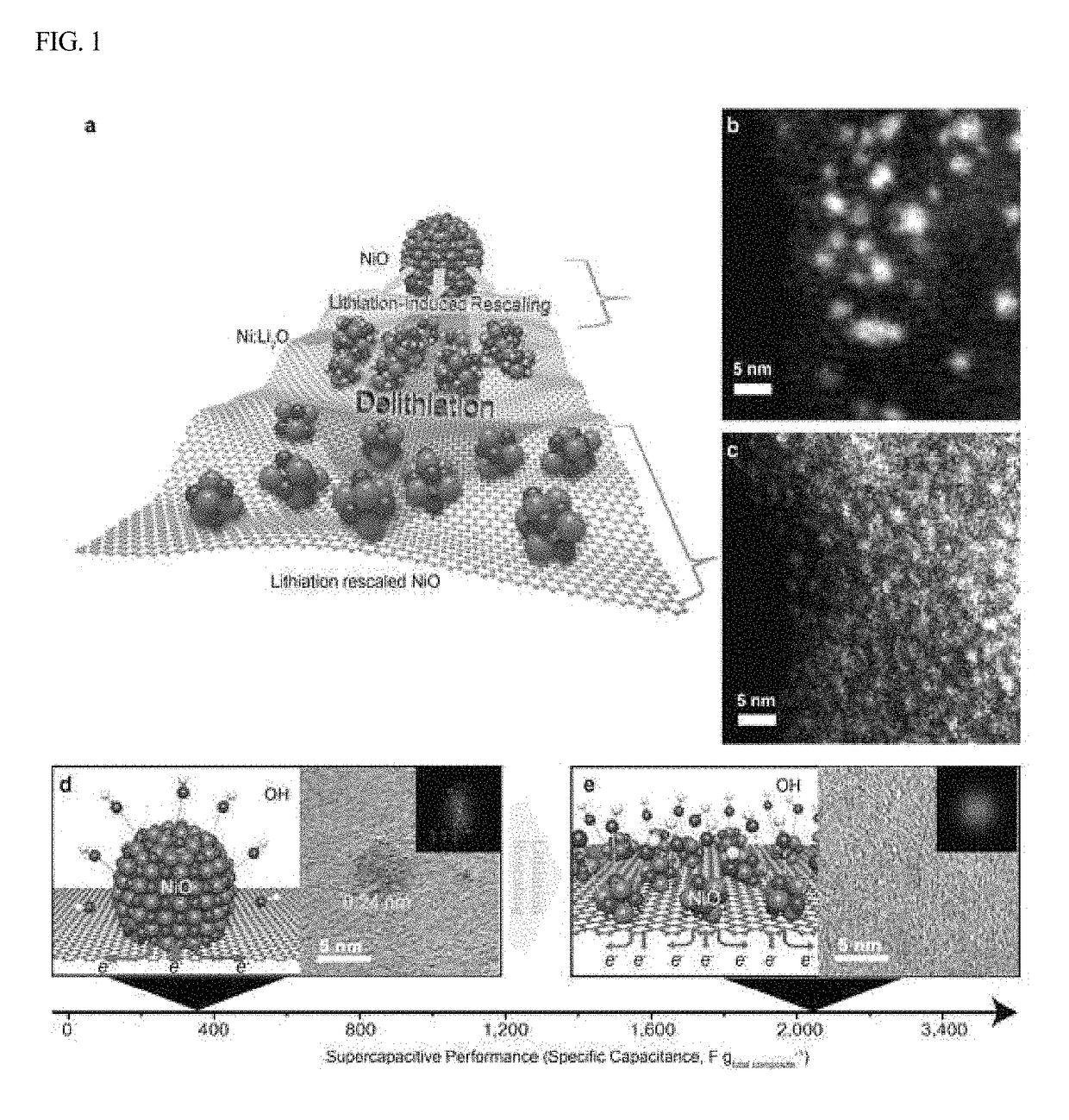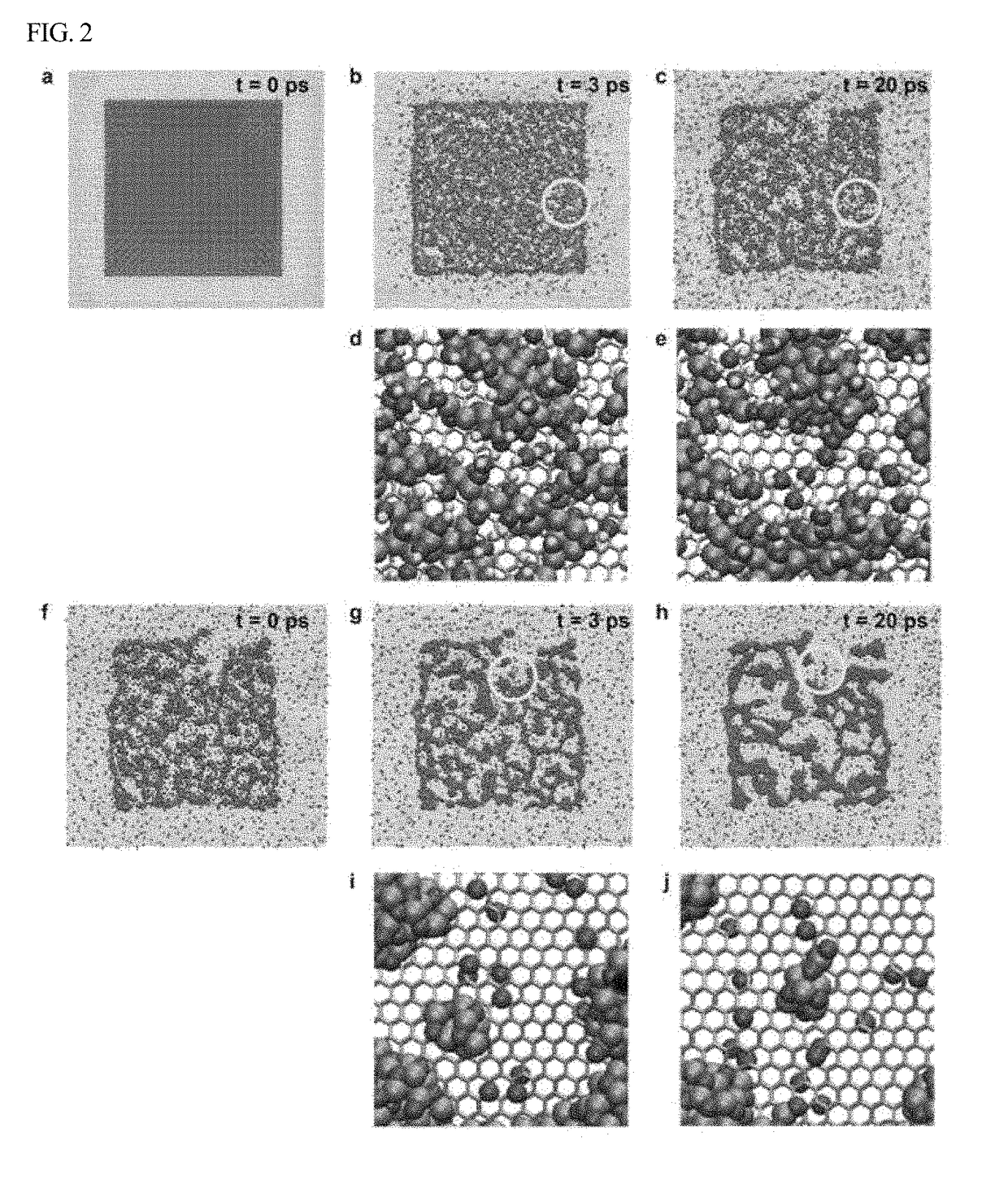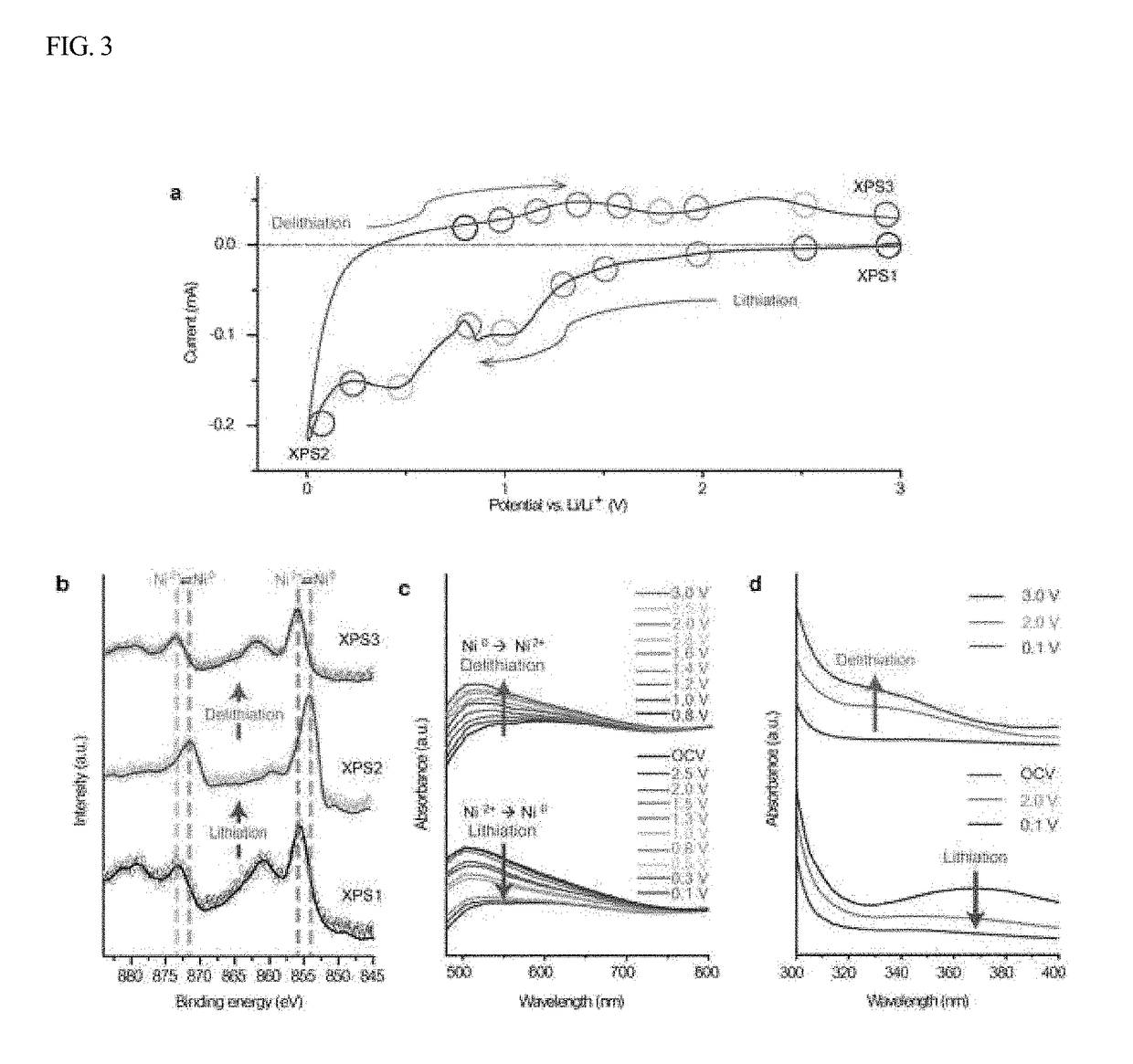Energy storage device based on nanocrystals including metal oxide rescaled by lithiation and supercapacitor using the same
a technology of energy storage device and nanocrystal, which is applied in the manufacture of electrodes, cell components, electrochemical generators, etc., can solve the problems of limited application to a condenser and deterioration of cycle characteristics, and achieve excellent life cycle characteristics
- Summary
- Abstract
- Description
- Claims
- Application Information
AI Technical Summary
Benefits of technology
Problems solved by technology
Method used
Image
Examples
example 1
Synthesis of Graphene / NiO Nanocrystals
[0056]Graphene oxide was dispersed in water by 1 hour of sonication (0.4, 1 and 2 mg / ml for NiO30-g, NiO50-g, NiO70-g, 30 ml). Then, an appropriate amount of nickel acetate [Ni(CH3COO)24H2](50.9 ml, 10 mM aqueous solution) was added to obtain NiO nanoparticles on the graphene oxide solution. After additional sonification for 30 min, the mixed solution was reduced with 28 wt. % of ammonium hydroxide solution (2.8 ml) and 35 wt. % of hydrazine solution (15 ml) while stirring for 3 hours at 60° C. After filtration, the reduction product was washed with water several times and dried overnight in a vacuum oven at 60° C. to obtain black powder. These steps have been executed to produce NiO precursors coated on graphene, which was subsequently reduced by thermal chemical vapor deposition (CVD) under a hydrogen atmosphere at 300° C. for 3 hours. A final product was obtained after additional heat treatment for about 2 hours under air at 250° C. The mass ...
example 2-1
Resealing of Cobalt Oxide Particles Among Transition Metal
[0068]For synthesis of graphene / cobalt oxide nanoparticles, graphene oxide was dispersed in water by 1 hour sonication (1 mg / ml, 30 ml). Then, an appropriate amount of cobalt acetate [Co(CH3COO)24H2](51 ml, 10 mM aqueous solution) was added to obtain Co3O4 particles in the graphene oxide solution. After additional sonication for 30 minutes, the mixed solution was reduced with 28 wt. % ammonium hydroxide solution (2.8 ml) and 35 wt. % hydrazine solution (15 ml) while stirring for 3 hours at 60° C. After filtration, the reduction product was washed with water several times and dried overnight in a vacuum oven at 60° C. to obtain black powder. These steps have been executed to produce a graphene substrate coated with cobalt precursor, which was subsequently reduced by thermal chemical vapor deposition (CVD) under a hydrogen atmosphere at 300° C. for 3 hours. A final product was obtained after additional heat treatment for about ...
example 2-2
Rescaling of Iron Oxide Particles Among Transition Metal
[0069]Production and measurement of performances have been conducted by the same procedures as described in Example 2-1 except that iron oxide was used instead of nickel oxide.
PUM
| Property | Measurement | Unit |
|---|---|---|
| size | aaaaa | aaaaa |
| size | aaaaa | aaaaa |
| size | aaaaa | aaaaa |
Abstract
Description
Claims
Application Information
 Login to View More
Login to View More - R&D
- Intellectual Property
- Life Sciences
- Materials
- Tech Scout
- Unparalleled Data Quality
- Higher Quality Content
- 60% Fewer Hallucinations
Browse by: Latest US Patents, China's latest patents, Technical Efficacy Thesaurus, Application Domain, Technology Topic, Popular Technical Reports.
© 2025 PatSnap. All rights reserved.Legal|Privacy policy|Modern Slavery Act Transparency Statement|Sitemap|About US| Contact US: help@patsnap.com



